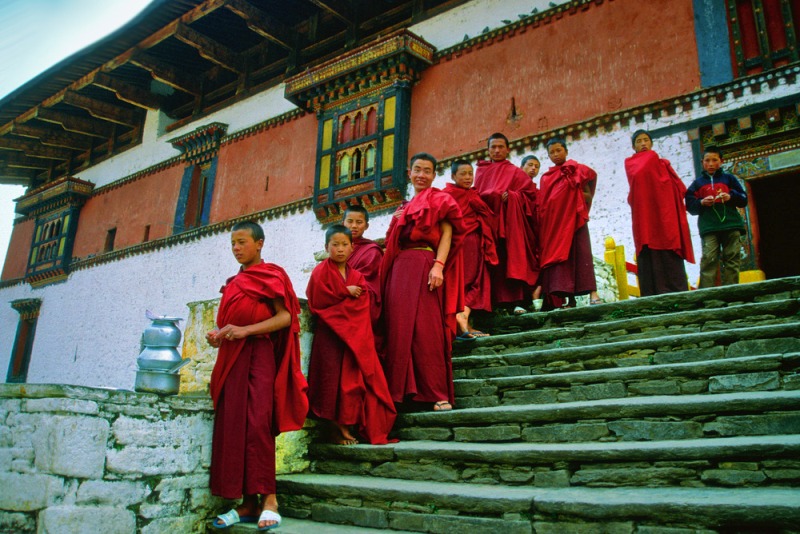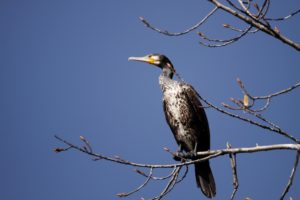
Bhutan has many activities available for those visitors seeking a place of solace, rest and recuperation. Whether it’s a session of peaceful, contemplative meditation, a relaxing soak in a mineral hot spring bath or the all natural remedies of our traditional medicine, Bhutan has just what you need to revive and rejuvenate your body and spirit.
Our many meditation and mediation retreats will provide you with places of respite from the cares and stress of everyday life. Many visitors come to Bhutan specifically for meditation and retreat tours. Additionally, most hotels also provide yoga sessions, retreats and meditation facilities within the hotel premises.
The traditional medicine of Bhutan is known as Sowa Rigpa and dates back to the 17th century when it first spilt from it Tibetan origins. Bhutan’s natural environment, with its exceptionally rich flora has enabled the development of an unparalleled pharmacopoeia. Indigenous medicine units have been established in all 20 Dzongkhags (districts) and can provide visitors with traditional remedies for any ailments they may have. 46 Hot springs or Tshachus as they are locally known can be found all over the Kingdom and their medicinal properties are known to cure various ailments ranging from arthritis to body aches and even sinuses.
MEDITATION AND RETREATS
As one of the last strongholds of Vajrayana Buddhism, meditation and meditation retreats are readily available.
These retreats and meditation centres provide places of respite from the cares and stress of everyday life. Devout Buddhists often venture into the mountains for months at a time to meditate.
Some visitors wish to include serious meditation programs in their itineraries. These may last for days while others only look to spend a few hours in the high hills and temples where the serenity and beauty of nature can be appreciated in undisturbed silence. We can include meditation programs in your itinerary if you are interested in trying this Bhutanese way of retreat.
Day 01: ARRIVE AT PARO
Visit Paro Dzong and Kyichu Lhakhang in the afternoon.
Overnight in Paro.
Day 02: TAKTSANG MONASTERY OR TIGER’S NEST – THIMPHU
After a visit to the Tiger’s nest, drive to Thimphu.
Overnight in Thimphu.
Day 03: THIMPHU – SIGHTSEEING
In Thimphu, visit the National Memorial Chorten (stupa), and drive to Kuensel Phodrang where a large statue of Buddha Shakya Muni is being built. In the afternoon, visit Zorig Chusum (the Institute of Arts and Crafts) and the Craft Market for Religious items and souvenir shopping.
Overnight in Thimphu.
Day 04: THIMPHU – HIKING TO TANGO AND CHERI MONASTERY
In the morning drive to the base of the Tango and Cheri monasteries. These monasteries are located about an hour and half away from Thimphu.
The Tango monastery was originally the residence of Phajo Drugom Shigpo (who introduced the Drukpa Kagyupa School into Bhutan) in the 13th century. The monastery was rebuilt in its present form in 1688 by Tenzin Rabgye, the 4th Temporal Ruler of Bhutan and 1st Tri rinpoche. The monastery was restored in the mid 1990s and is now the residence of the 7th Tri rinpoche, the young reincarnation of Tenzin Rabgye. It is also a Buddhist university.
Cheri monastery was built by ZhabdrungNgawangNamgyal in 1620 who established the first monk body here. Today, these monasteries host retreat centres for many monks and other Buddhist worshippers.
Overnight in Thimphu.
Day 05: THIMPHU – PUNAKHA
Drive about two hours to Punakha. On the way, stop at Dochula pass to witness the famous 108 Druk Wangyel Chortens (Stupas) and visit Chimi Lhakhang. Visit Punakha Dzong in the afternoon.
Overnight in Punakha.
Day 06: PUNAKHA – GANGTEY – BUMTHANG
Visit the beautiful Gangtey valley and the Gangtey monastery before lunch. Then drive to Bumthang via the Pelela pass. Visit Chendebji Chorten on the way. Built during the first half of the 18th century by a lama named Shida, in order to nail into the ground a demon who had been terrorizing the inhabitants of the Chendebji and Ada valleys, this Nepalese styled chorten has eyes painted at the four cardinal points.
Overnight in Bumthang.
Day 07: BUMTHANG – SIGHTSEEING
Visit some of the holiest places such as Kurje Lhakhang, Mebar Tsho, Jambay Lhakhang and Tamshing.
Overnight in Bumthang.
Day 08: BUMTHANG – VISIT TO THARPALING
Visit Tharpaling Monastery. Tharpaling meaning place of liberation, is located on a hillock overlooking the villages of Chumey and Gaytsa in Bumthang. It is about an hour’s drive along a dirt road which winds up from the village of Gaytsa.
Gyalwa Longchen Rabjampa, a 14th century Tibetan master visited Tharpaling and preached a dharma called Yodsel Dorji Nyingpo. In the course of his teaching he liberated many followers and gradually the place came to be known as Tharpaling or the place of liberation. Today, it is one of the important monastic bodies of Kagyu and Nyingma sects of Buddhism in Bhutan. Popularly known as the ‘Great cannon of Tharpaling,’ the Tharpaling cannon, is a massive phallus-carved of stone and cement. This seven foot wonder has a seemingly-strange but interesting history behind it. According to the curator of the temple, the massive phallus was erected with its tip pointed toward the valley. Legend has it that the valley facing the temple is in the shape of a female organ. As a result of this strange setting, it posed a threat to the sanctity of the temple and there were occasions when monks from the monastery gave up their monkhood which resulted in a decline in the number of monks there.
Overnight in Bumthang.
Day 09: BUMTHANG – THIMPHU
Drive back to Thimphu.
Overnight in Thimphu.
Day 10: THIMPHU – PARO INTERNATIONAL AIRPORT
Drive to Paro International Airport where your guide will bid you farewell.


